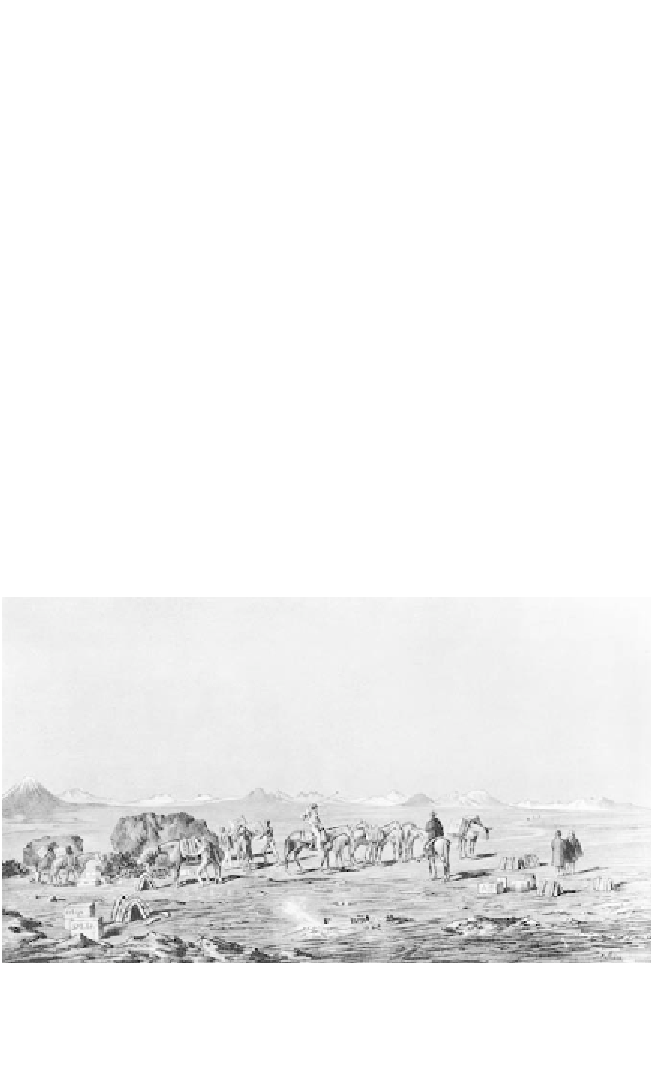Travel Reference
In-Depth Information
Potosí and the Silver Trail
In the 17th and 18th centuries, the Bolivian city of Potosí was the silver
mining capital of the world. Its fabulous mountain of high-grade silver
ore attracted a transient mining population, which, at times, numbered
more than 100,000 people. Potosí easily was the most populous place
in the hemisphere. The largest number of residents consisted of indig-
enous Peruvian laborers brought to the mines under the draft labor sys-
tem called the
mita.
By 1700, however, mining operations were largely
supported by a more or less permanent workforce made up of mestizos
and African slaves, as well as Basque, Genoese, and Portuguese labor-
ers. While most workers camped on the outskirts of the city, Spanish
officials, merchants, and clergymen, numbering anywhere from a
quarter to a third of the population, inhabited permanent buildings
downtown. The Imperial City of Potosí boasted of some 4,000 build-
ings of stone, several with two stories. The Catholic religious orders
housed themselves in well-made monasteries and convents decorated
with silver plate and tapestries befitting the wealthiest mining area in
the world.
Without the silver mines, however, no one ever would have estab-
lished such a metropolis in this Andean wasteland. The mining district
lies between 12,000 to 17,000 feet above sea level. Few trees or grass,
Mule trains, such as this one shown taking a break while crossing the Bolivian cordillera,
provided transportation between the Argentine port of Buenos Aires and the silver mines of
the Andes. The route was long and arduous and required hard trekking by tens of thousands
of mules and thousands of muleteers.
(León Pallière, 1858)



